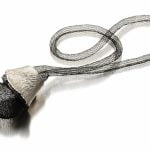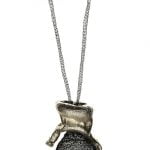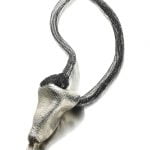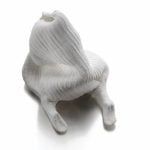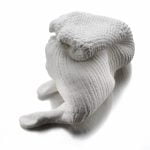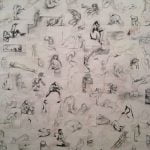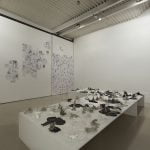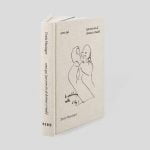Doris Maninger (Graz, 1958) lives and manages, teaches, draws, models, sews and creates jewelry, mainly in Florence. Maninger studied painting and history of art at the Vienna Academy of Fine Arts and worked as restorer of frescoes, wooden sculptures and gilding for the Italian Ministry of Cultural Heritage and Activities in Cosenza, Calabria. From restoration work she moved on to experiment with different materials in the fields of painting, sculpture and textile design, combining traditional techniques with contemporary conceptual approaches. After completing her studies in jewelry in 1998, she founded the internationally acclaimed school of experimental jewelry, Alchimia, together with Lucia Massei. She has exhibited, curated exhibitions and taught in private and public institutions all over the world.
Is contemporary jewelry still a new medium? Why?
This is a difficult question to answer. I do not think it is a new medium, provided what one classifies as new. Contemporary jewellery had its start more or less in the seventies of last century but being a very restricted field it might be called new in a lot of environments. There are quite a few articles and books written on this matter and lots of discussions going on asking what actually is ‘contemporary jewelry’. So, my answer in the end is that yes, it is a new medium because it still lacks a clear definition.
You are an artist. Then you became a teacher. Does the teacher push the artist?
I define myself artist and educator and the artist pushes the educator as the educator pushes the artist. I like to tell to my students a phrase heard often from my great master Manfred Bischoff: “Teaching is a dialogue, the only thing I have more than you is experience”
You founded a jewellery school in Florence, Italy, a hallmark of European arts and artisanal craft. Did this fact have any influence on the school or its evolution?
Certainly Florence had and still has a great influence on the school and its evolution. In the first place, it is our most precious publicity. I don’t think our school could have worked out as it has in any other place in the world. Secondly, being surrounded by so much invaluable art is very inspiring but it can also be tricky because it is quite hard to live up to so much beauty every day.
You have been judging entries for the AUTOR competition for many years. Can you tell us what has changed since you first joined AUTOR?
I think AUTOR has been growing every year, what changed is the quality of entries, especially in the last two years. It makes me very happy to see this, I think makers get more aware of what they are doing, their craftsmanship and care for detail is improving. It is also good to see that more international makers are starting to apply to AUTOR, which means that the organising team is doing a very good job in promoting the event.
What advice would you like to give young artists in this field?
My advice to the artists in the field is: Do your work with passion and dedication, work as hard as you can inspiration is not something that falls on your head you need to work on it. Don’t stay too close to your work, learn to get distance and see it from far. Do not identify too much with your work or you wont be able to take critique. Be open and curious for what is happening around, in art in society in politics and listen to your hands they often know more than your brains.


